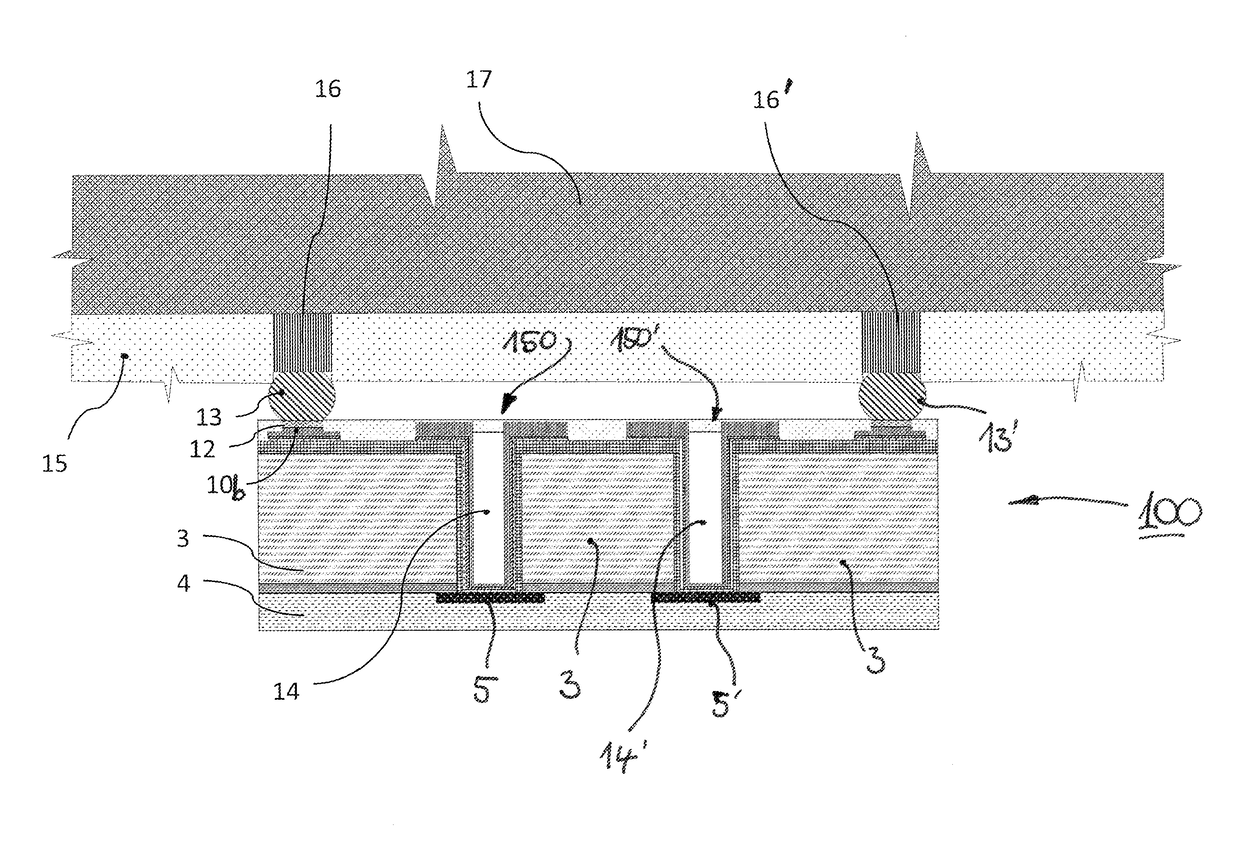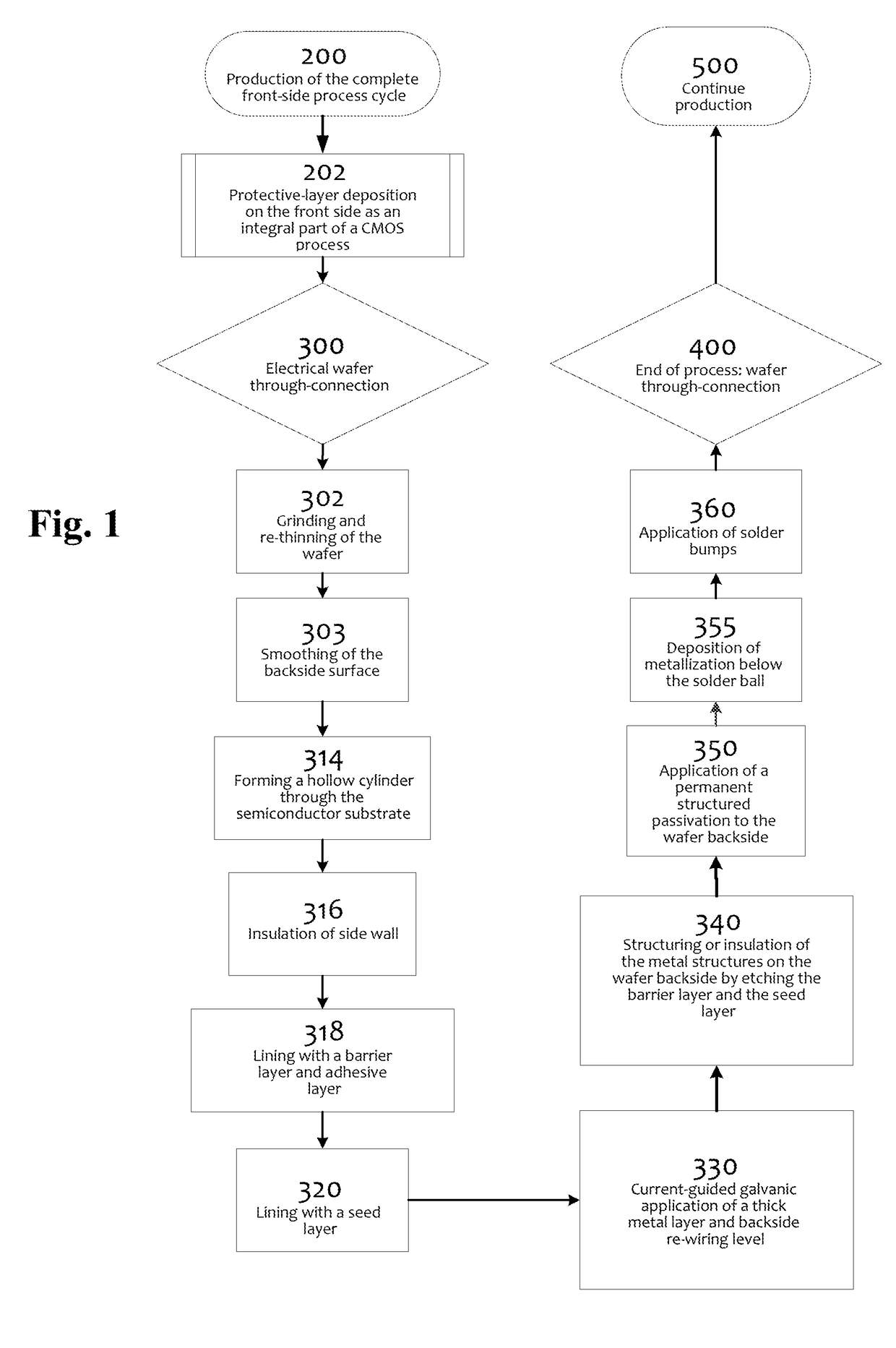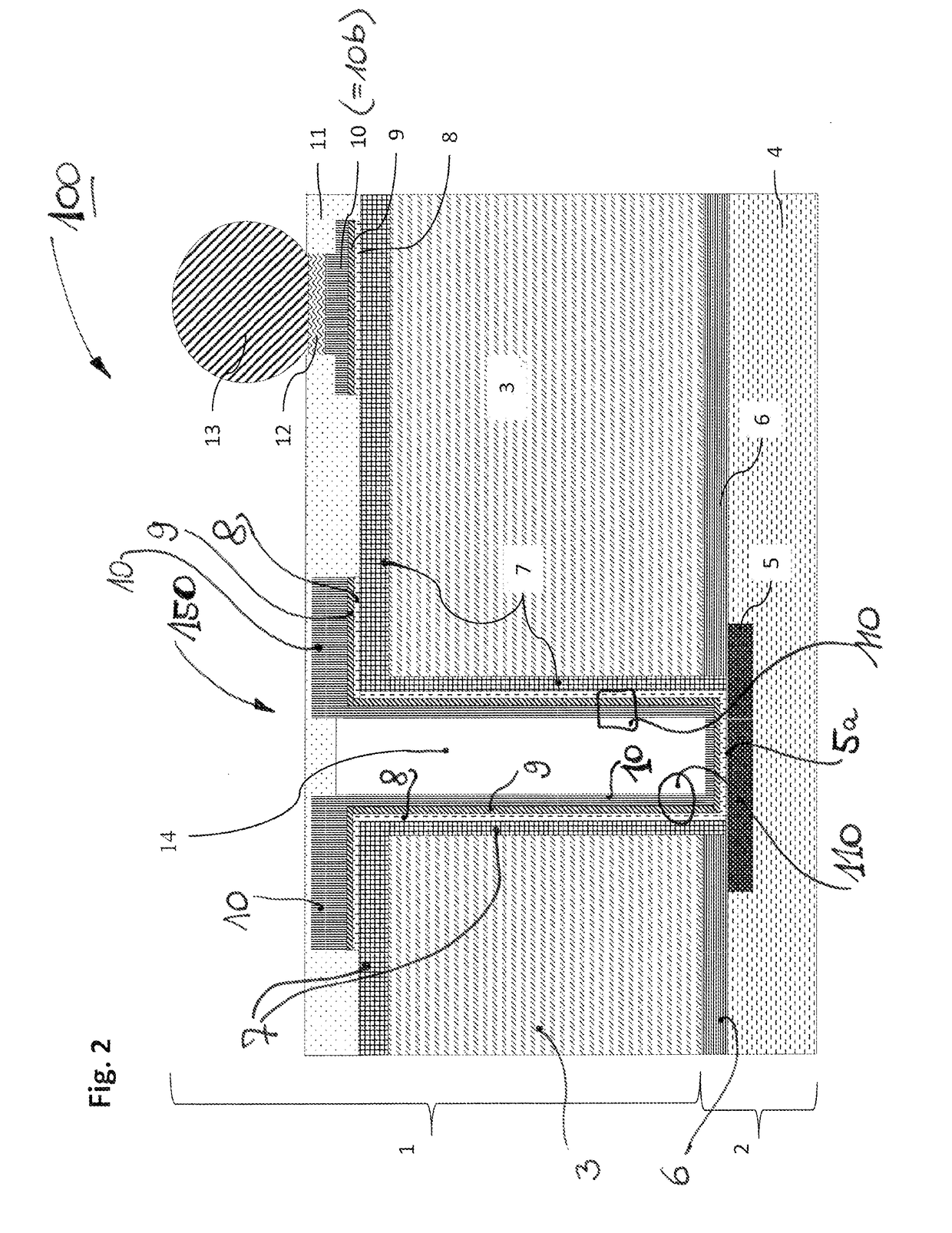Electrical conductive vias in a semiconductor substrate and a corresponding manufacturing method
a manufacturing method and semiconductor technology, applied in the direction of semiconductor/solid-state device manufacturing, electric apparatus, solid-state devices, etc., can solve the problems of affecting the production efficiency of the via, the conductive material of the via is also significant, and the application field is severely limited by the approach “via-, etc., to achieve the effect of increasing flexibility and low cos
- Summary
- Abstract
- Description
- Claims
- Application Information
AI Technical Summary
Benefits of technology
Problems solved by technology
Method used
Image
Examples
Embodiment Construction
[0063]These—and further—embodiments will be described in detail. Initially we alternately refer to FIG. 1 and FIG. 2.
[0064]FIG. 1 schematically shows an exemplary process flow for producing a component structure including a subsequent production of an electrical via. As shown, a complete front-side process cycle 200 is initially performed, in which the desired component structure, for example, a CMOS structure, a MEMS structure is produced in combination with electronic components, etc. For this purpose, the process technologies required for this are employed, as described above, without having to consider the subsequent production of the via(s).
[0065]FIG. 2 shows a cross-sectional view of a component 100 in this regard, which component is referred to as a micro-technical component in order to thus describe that at least some sizes of structural elements, e.g. semiconductor devices or the like, include dimensions of 10 μm or less. The term “micro-technical” component thus includes a...
PUM
 Login to View More
Login to View More Abstract
Description
Claims
Application Information
 Login to View More
Login to View More - R&D
- Intellectual Property
- Life Sciences
- Materials
- Tech Scout
- Unparalleled Data Quality
- Higher Quality Content
- 60% Fewer Hallucinations
Browse by: Latest US Patents, China's latest patents, Technical Efficacy Thesaurus, Application Domain, Technology Topic, Popular Technical Reports.
© 2025 PatSnap. All rights reserved.Legal|Privacy policy|Modern Slavery Act Transparency Statement|Sitemap|About US| Contact US: help@patsnap.com



